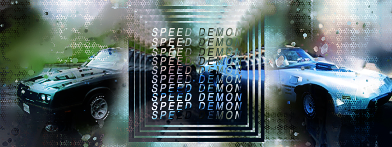The cat won't handle the shifting problem though.
Make sure you have the correct fluid in the transmission... It should be DEXRON(R)-VI
Technical Service Bulletin that may apply:
A/T - Gear Engagement Time Information
Notes
INFORMATION
Bulletin No.: 03-07-30-007E
Date: May 05, 2008
Subject:
Engagement Time of Electronically Controlled Transmissions in General Motors Vehicles (Garage Shifts, Park to Reverse, Neutral to Drive, Neutral to Reverse, Park to Drive, Delayed Engagement)
Models:
2000 - 2002 Chevrolet Camaro
2000 - 2005 Chevrolet Corvette
2000 - 2002 Pontiac Firebird
2004 - 2006 Pontiac GTO
2000 - 2008 All GM Light Duty Trucks
2003 - 2008 HUMMER H2
2006 - 2008 HUMMER H3
2005 - 2008 Saab 9-7X
with 4L60-E (RPO M30) or 4L65-E (RPO M32) Automatic Transmission
Supercede:
This bulletin is being revised to add the 2008 model year to the trucks. Please discard Corporate Bulletin Number 03-07-30-007D (Section 07 - Transmission/Transaxle).
Park/Neutral to Reverse or Drive (commonly called garage shift) engagement times may be different from what many customers might be accustomed to especially if they have recently traded for a General Motors vehicle.
Normal Park/Neutral to Reverse or Drive engagement time will be in the vicinity of one (1) second if the automatic transmission fluid (ATF) is above 0°C (32°F). When the ATF is colder than 0°C (32°F), the engagement time will become longer the colder the transmission fluid. A time limit factor cannot be placed on proper engagement times because the factors that affect transmission operation are many.
At the moment of engine start, for economy and emission requirements, the transmission line pressure is maintained at low levels. This allows a lower cold idle engine RPM (the colder the oil is, the higher the energy level (engine torque output) required to pressurize the oil).
When the driver moves the shift lever from "Park/Neutral" to "Reverse" or any "Drive" range, the following actions must occur for the powertrain control module (PCM) to determine at what pressure to control the transmission line pressure.
The module will look at the following items:
1. The voltage readings of the engine coolant temperature sensor (ECT).
2. The voltage reading of the transmission fluid temperature sensor (TFT).
3. Whether or not air conditioning is requested.
4. Movement of the shift lever and controls engine RPM based on the gear position selected. The module will adjust the engine RPM in response to the torque requirements needed to increase transmission line pressure.
When the module determines the status of the above items, the module will apply the appropriate signal to the PWM pressure control solenoid, thereby controlling the application of the required clutch(es) depending on the driver's selection.
Controlling transmission apply pressures allows the transmission to engage in a smooth manner, thus reducing the potential of abrupt/harsh engagement of the transmission.
All of the above actions happen very quickly; however, the resultant time interval may be approximately one second.
When determining if shift times are excessive, the exact conditions that the vehicle was in at the time the extended garage shift occurred must be duplicated. The following are several possible conditions.
^ Was the vehicle outside or in a heated garage?
^ What was the temperature of the environment at the time of the occurrence?
^ Length of time the vehicle sat unused, such as overnight or a weekend, etc.? A vehicle that has been driven to the service facility cannot be tested for this concern because the transmission, the engine oil and the coolant are no longer at the temperature they were when the customer experienced the condition.
No attempts to repair should occur unless the condition can be duplicated under the conditions the customer experienced.
Road test the vehicle following the steps below until the vehicle engine and transmission temperatures are at normal operating temperatures. This is approximately 16 km (10 mi) of driving.
1. In a safe manner, bring the vehicle to a complete stop.
2. Place the shift lever in Neutral and wait five seconds.
3. Place the shift lever in Drive. A delayed engagement of approximately one (1) second will occur. THIS IS NORMAL. This time may be extended if the engine RPM is above the base idle, controlled by the driver's foot rather than the control module.
4. Drive the vehicle for a distance of not less than a tenth of a mile (160 m).
5. In a safe manner, bring the vehicle to a complete stop.
6. Place the shift lever in Neutral and wait five seconds.
7. Place the shift lever in Reverse. A delayed engagement of approximately one (1) second will occur. THIS IS NORMAL. This time may be extended if the engine RPM is above the base idle, controlled by the driver's foot rather than the control module.
8. Place the shift lever in Neutral and wait five seconds.
9. Place the shift lever in Drive. A delayed engagement of approximately one (1) second will occur. THIS IS NORMAL. This time may be extended if the engine RPM is above the base idle, controlled by the driver's foot rather than the control module.
If an out of line condition (excessively long time, over two seconds, to engage a gear) is observed, the following components within the transmission should be inspected for the cause of the concern.
^ Forward clutch piston seals (delay to drive)
^ Forward accumulator piston and seal for damage (delay to drive)
^ Low and reverse clutch piston seals (delay to reverse)
^ Reverse input clutch piston seals (delay to reverse)
^ Stator shaft to reverse input drum seals (delay to reverse)

















